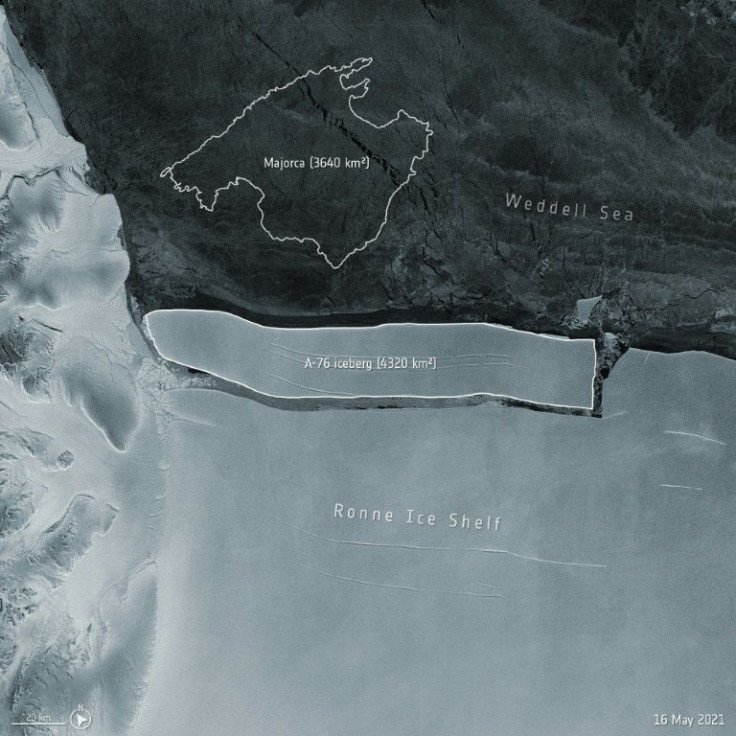Satellite Photo Shows The World's Largest Iceberg Floating To Its Doom
NASA's Terra satellite has captured the world's largest iceberg as it makes its one-way trip to warmer waters.
The image released by NASA Earth Observatory on Nov. 4 shows the massive iceberg known as A-76A visible in the drake passage that's infamous for leading ice slabs to their demise.
The gigantic iceberg measures around 84 miles long and 16 miles wide and covers an area twice the size of London.
Meet Antarctic iceberg A-76A — the biggest remaining piece of what was once the largest floating iceberg. 👋 🧊
— NASA Earth (@NASAEarth) November 4, 2022
In October 2022, @NASA’s Terra satellite spotted the berg drifting into the turbulent Drake Passage between Antarctica and South America. https://t.co/RTQieF8HxP pic.twitter.com/JIPyrdYWBj
Interestingly, A-76A is originally the biggest piece of another iceberg, the A-76, which was once the largest of its kind in the world. It had dislodged from Antarctica's Ronne Ice Shelf in May 2021 and, within a mere month, broke down into three smaller pieces, A-76A, A-76B and A-76C.
The largest of the three icebergs has remained relatively unchanged ever since and has journeyed around 1,250 miles, the U.S. National Ice Center (USNIC) reported in October 2022, according to LiveScience. However, its fate is about to change as the A-76A entered the Drake passage.
The Drake passage is a body of water between South America's Cape Horn and Antarctica's South Shetland Islands. The powerful Antarctic Circumpolar Current (ACC) passes through this passage and is responsible for the doom of many an iceberg.
The ACC is the only current that flows completely across the globe and contains more water than any other current on Earth. It moves from west to east through the Drake Passage and transports between 3,400 and 5,300 million cubic feet of water every second, according to Britannica.
Consequently, when a stray berg enters the Drake Passage, it is pulled away from the Antarctic and directed towards warmer waters, where they end in a watery grave.
Meanwhile, it remains unclear how other smaller currents play a role in the distribution and eventual loss of the wandering ice slabs.
A study on another gargantuan iceberg, A68a, was published on Oct. 19 in the journal Science Advances. The study found that the iceberg, which held the title of the world's largest iceberg for around three years, broke down into two parts in late 2020.
The breakage was on account of strong oceanic currents after escaping a potentially catastrophic collision on South Georgia Island. While the sudden fracture of the iceberg in the middle of the ocean took scientists by surprise, closer analysis revealed that the reasons behind the break were a sudden shift in the iceberg's direction and the strength of nearby currents.

© Copyright IBTimes 2025. All rights reserved.





















